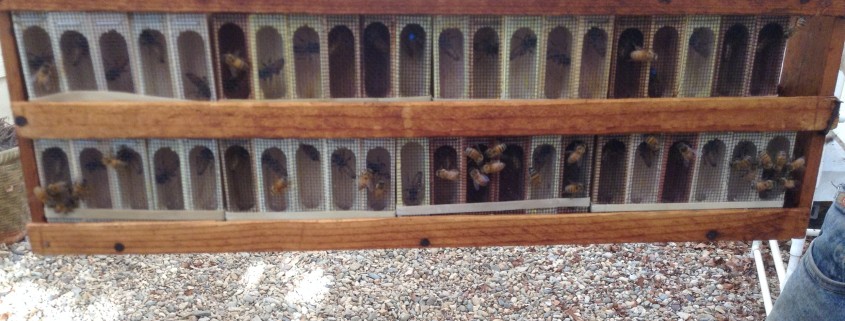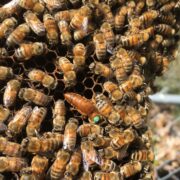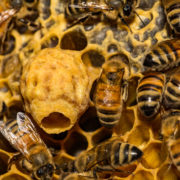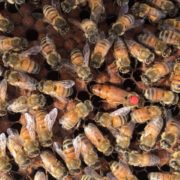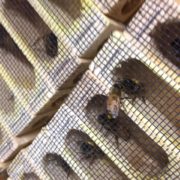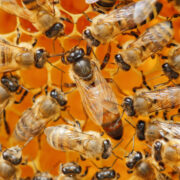The Final Fall Queens
At some point in early autumn, usually around mid-September, give or take, mating conditions begin their decline. The bees sense the oncoming change of season, and bee colonies begin subtle changes in preparation of the upcoming winter ahead. Our queen cell building colonies, which earlier in the season were queen-producing machines, grow less enthusiastic about raising new queen cells with each passing day. They know it, and we know it too: the season is nearing its end.
Colonies have begun to cut back on brood rearing and are especially reluctant to produce new drones. Autumn is not a season of swarming and expansion, so the bees feel little need to raise new drones. Without swarms and virgin queens flying about, drones serve little purpose in the honeybee world. We begin to see less and less of them.
Autumn is when we harvest the very last queens of the year. Our last batch of queen bees, pictured above, was mated about a month earlier when conditions were better. These are the true fall queens, the final mated queen bees of the year.
The last batch of queens also marks the end of the queen-rearing season for Wildflower Meadows. The mating nucs are shut down, our employees take some well-earned time off, and the bees begin their long journey into the winter season

